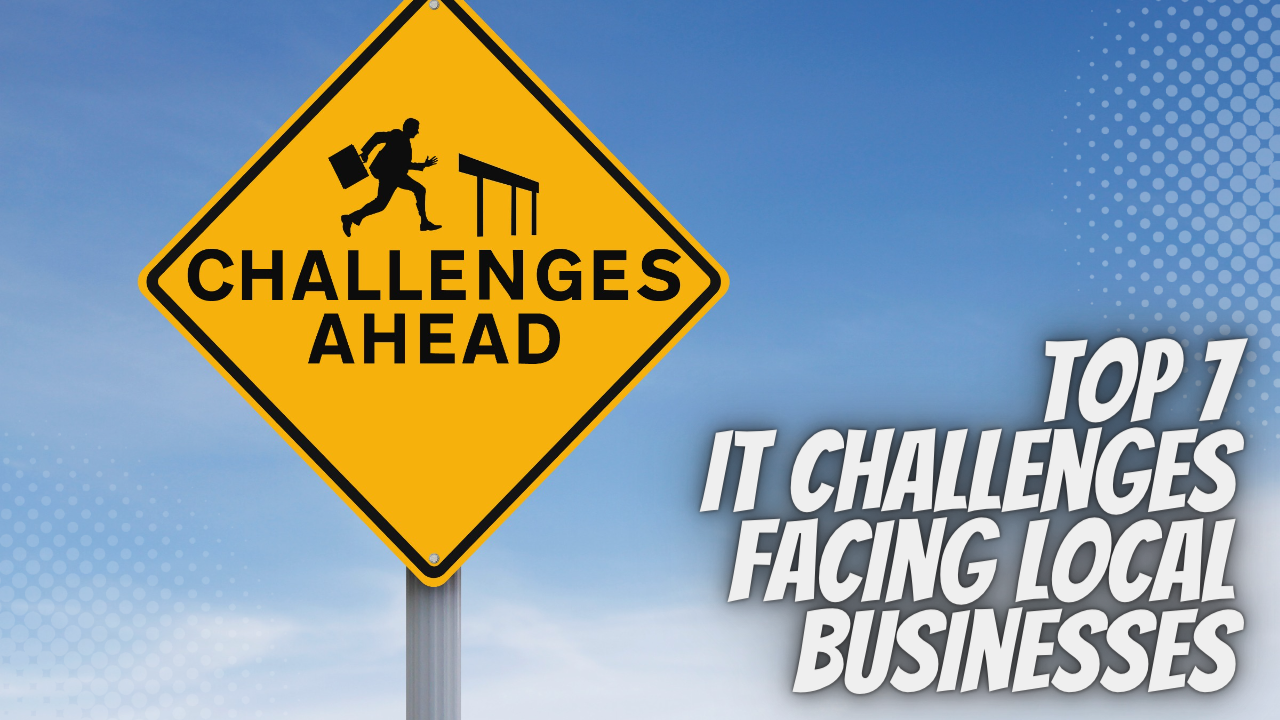The Top 7 IT Problems Businesses Face Every Day (and Solutions to Each)
Key Points:
- Technology is the lifeline of nearly all businesses.
- However, even the most well-run organization will experience IT issues from time to time.
- Understanding IT problems that other organizations face can help you identify and address tech issues in your business in real time.
- While there are multiple IT problems companies face, some are so common that every business should beware of and mitigate against.
IT isn’t a choice but an integral business strategy in the current business environment. To remain competitive in the years to come, organizations must set up and use the latest tech systems to ensure future growth and innovation.
As technology evolves, your business should take a step back, identify, and fend off IT problems before they interrupt your daily operations. While companies face several potential IT problems, we want to only focus on the seven most common ones and how to address each.
1. Information Security
Online is becoming the default operation mode for most organizations. The shift to digital operation makes data the world’s most valuable asset and resource. As a valuable commodity, data collection, use, and security are fundamental to the operation of any business.
However, many businesses have problems protecting the information they handle. The spike in phishing attacks, ransomware, and malware scams disguised as legitimate offers make cybersecurity a mandatory business investment and expenditure. Attackers can target your business computers in the least obvious ways. You need a better understanding of cybersecurity to protect the information your business handles.
Insufficient information security presents horrifying consequences on a business, such as:
- Data loss
- Security vulnerabilities
- breach of trust among customers
- Revenue loss in the event of a ransomware attack
- Denial of access to your business’ online resources, such as the website
- Hefty fines and regulatory sanctions in the event of a successful data breach
To protect data in your organization, you need proactive cybersecurity measures to detect and respond to threats immediately.
2. Keeping Up With Tech Evolution
Technology is evolving at a breakneck pace. Your business/organization must constantly improve its technology and processes to stay competitive and secure IT infrastructure.
However, many companies struggle to stay up-to-date with trends in technology — they have outdated hardware and software and can’t keep up with tech trends. Outdated technologies cause problems such as:
- Slow performance
- Security vulnerabilities
- Device and system incompatibility
- Trouble accessing updates and new features
- Inability to keep up with the competition
The best way to stay updated is to automate software updates and actualize regular hardware updates. You can also have a team to research the latest technology to check if your business can benefit from any new tech trend.
3. Data Loss
The horror of data loss is scary to any business. Losing business data can be devastating for your company’s reputation and finances. Your business can lose data for any one of the following reasons:
- Software corruption
- Human failure
- Natural disaster
- Hardware failure
- Malicious attacks
Every second counts when your business loses data, so you need an action plan before data loss occurs. Having a plan enables you to respond as quickly as possible to minimize the damage. You need a data recovery plan to lean on in case of data loss.
4. Sluggish Internet
Slow internet can cost real dollars and add stress to your business. Many businesses still need fast internet free from constant interruption. Slow internet stems from:
- Outdated router
- Connecting too many devices to a network
- Internet congestion
When your internet is slow, people in your organization will:
- Have trouble accessing websites and online resources
- Experience poor video and audio quality during online meetings
- Face difficulty sharing large files
- Slow work performance
If you’re experiencing a slow internet connection, go to Fast.com to check your internet speed. Then, compare it with what your Internet Service Provider is offering.
If you note a huge difference in speed, examine internal issues. You can reset the router or disconnect devices that no one is using.
5. Problems With Peripherals
Having issues with keyboards, mice, printers, and other peripheral devices is common in many businesses. Most peripheral devices’ problems are hardware failure, outdated drivers, or dust and dirt build-up.
Other times, the source of peripheral problems can be unclear but can hinder your business in several ways, such as:
- Poor performance from devices
- Device operating incorrectly
- A drop in work efficiency among workers
- Inability to use specific devices
The simplest way to solve peripheral problems is restarting your device. If restarting doesn’t work, cleaning dust and dirt should solve the problem. If the first two solutions don’t work, check for driver updates and install them if available. Experts recommend having electronic devices serviced at least on an annual basis for maximum efficiency and to prevent sudden breakdowns.
6. Email Problems
One serious IT issue that a business face is email problems from incorrect email settings, connectivity issues, outdated email software, or malware problem.
Email is the primary communication channel for many businesses and if it has issues, you might face problems such as:
- Inability to receive or send emails in your organization
- Sending emails to the wrong recipients
- Email deletion or loss
- A halt in productivity
- Slow performance
To fix email problems, check all the email settings and confirm they’re correct. If all settings are right, update your email software and install a reliable security solution. Alternatively, you can get remote IT support to access and diagnose the issue.
7. Adopting New Technology
Setting up new technology is a difficult task for many businesses. Many have problems getting the right tech skill, installing the frameworks correctly, and making the new tech compatible with the existing one.
As a result, organizations might deploy new tech solutions but still have issues with the following:
- Inability to use specific features
- Poor performance
- Devices not working correctly
To efficiently implement new technology, consult the user manual. You can contact the manufacturer for support if the manual doesn’t address your issue.
Alternatively, you can get IT experts who are specialized in your technology to get everything set up and straightened out.
You Can Solve Virtually All IT Issues Facing Businesses
As much as IT helps your business achieve its goals, you must execute the right processes and take care of your devices, or it’ll turn sour. You need to monitor, manage, and maintain your IT system to get the most out of it. While you can single-handedly solve common IT issues facing businesses, it’s important to have an in-house or outsourced expert monitor your hardware and software to keep your business running smoothly.





